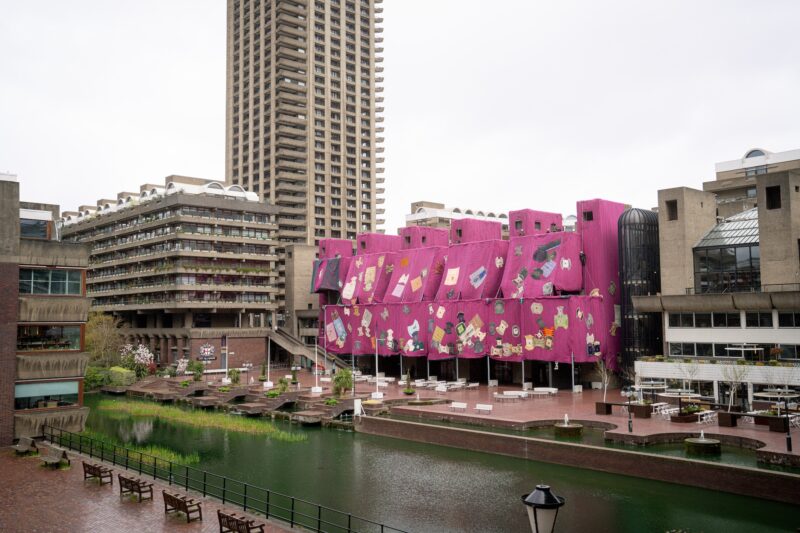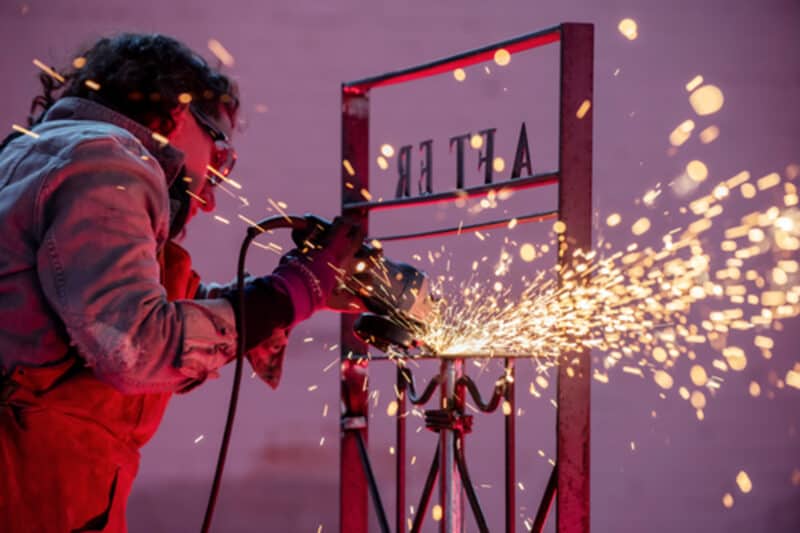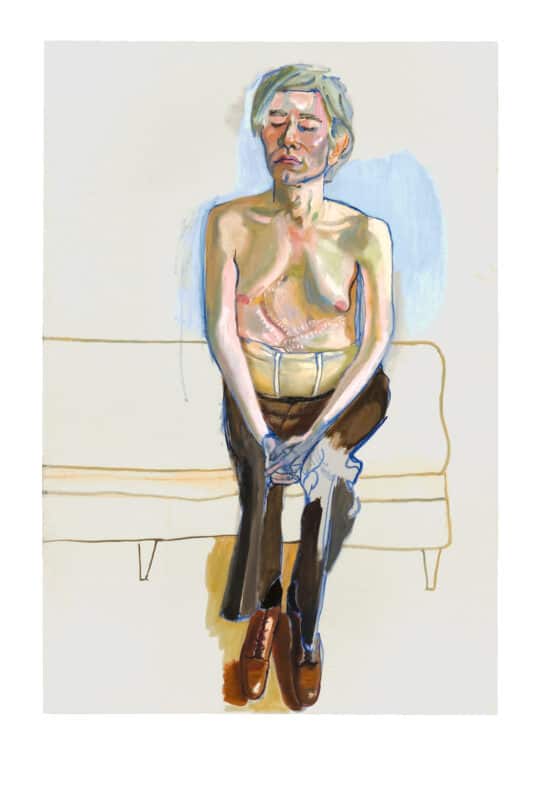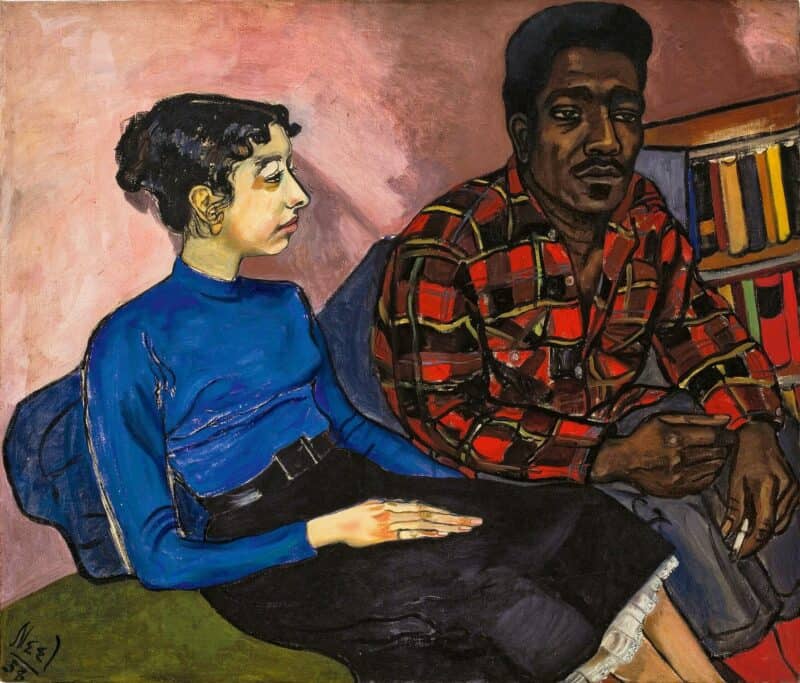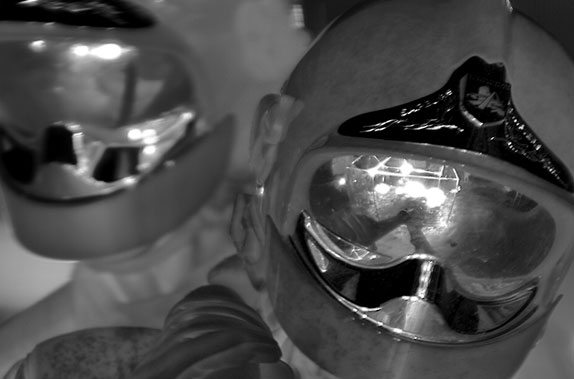
Richard Mosse Still frame from Incoming, 2015–2016. Three screen video installation by Richard Mosse in collaboration with Trevor Tweeten and Ben Frost. Co-commissioned by National Gallery of Victoria, Melbourne, and Barbican Art Gallery, London. Courtesy of the artist, Jack Shainman Gallery, New York and carlier|gebauer, Berlin
Opening today in the Curve at the Barbican Art Gallery is conceptual documentary photographer and Deutsche Börse Photography Prize winner Richard Mosse’s immersive multi-channel video installation. In collaboration with composer Ben Frost and cinematographer Trevor Tweeten, Mosse has been working with a new, powerful telephoto military camera that can detect the human body from a distance of more than 30km and accurately identify an individual from 6.3km, day or night. He has used this technology to create an artwork about the migration crisis unfolding across the Middle East, North Africa and Europe. Narratives of the journeys made by refugees and illegal migrants are captured by this thermal camera which records the biological trace of human life. Projected across three 8 metre-wide screens, the video installation is accompanied by a visceral soundtrack blurring ambient field recordings with synthetic sound design to create an overwhelming, immersive experience.

Richard Mosse Still frame from Incoming, 2015–2016. Three screen video installation by Richard Mosse in collaboration with Trevor Tweeten and Ben Frost. Co-commissioned by National Gallery of Victoria, Melbourne, and Barbican Art Gallery, London. Courtesy of the artist, Jack Shainman Gallery, New York and carlier|gebauer, Berlin.
At a time when, according to the UN, the world is experiencing the largest migration of people since World War II, with more than a million people fleeing to Europe by sea in 2015 – escaping war, climate change, persecution and poverty – Richard Mosse’s film presents a portrait of migrants made with a camera that sees as a missile sees. The film bears witness to significant chapters in recent world events, mediated through an advanced weapons-grade camera technology that reads only heat, and is blind to skin colour, capturing glowing bodies crossing dangerous waters, drowning at sea, or sleeping in makeshift camps, presenting a story of humans struggling against the elements for survival.
Richard Mosse said:
“I am European. I am complicit. I wanted to foreground this perspective in a way, to try to see refugees and illegal immigrants as our governments see them. I wanted to enter into that logic in order to create an image that reveals it. So I chose to represent these stories, really a journey or series of journeys, using an ambivalent and perhaps sinister new European weapons camera technology. The camera is intrusive of individual privacy, yet the imagery that this technology produces is so dehumanised – the person literally glows – that the medium anonymizes the subject in ways that are both insidious and humane. Working against the camera’s intended purpose, my collaborators and I listened carefully to the camera, to understand what it wanted to do — and then tried to reconcile that with these harsh, disparate, unpredictable and frequently tragic narratives of migration and displacement.”
Mosse is renowned for work that challenges documentary photography. For Infra (2011) and The Enclave (2013), a six-channel installation commissioned by the Irish Pavilion for the Venice Biennale, Mosse employed a now discontinued 16mm colour infrared film called Kodak Aerochrome that transformed the lush green landscape of the eastern Democratic Republic of Congo into vivid hues of pink to create a surreal dreamscape. Questioning the ways in which war photography is constructed, Mosse’s representation of the ongoing armed conflict in eastern Congo advocates a new way of looking. In Breach (2009), Mosse embedded with the US Army in Iraq to document American military occupation of Saddam Hussein’s palace architecture. He has also worked extensively along the US- Mexico border, Israel-Palestine, Lebanon, Syria, the Balkans, Haiti, Pakistan, Iran, and other locations.
Richard Mosse: Incoming The Curve, Barbican Centre
15th February – 23rd April 2017 www.barbican.org.uk/artgallery
About The Artist
Richard Mosse was born in 1980 in Ireland and is based in New York. He earned a Postgraduate Diploma in Fine Art from Goldsmiths, London in 2005 and an MFA in Photography from Yale School of Art in 2008. He represented Ireland in the 55th Venice Biennale with The Enclave in 2013. He is a recipient of the Deutsche Börse Photography Prize 2014, Yale’s Poynter Fellowship in Journalism, the B3 Award at the Frankfurt Biennial, a Guggenheim Fellowship, a Pulitzer Center on Crisis Reporting grant, and a Leonore Annenberg Fellowship. Mosse has exhibited in solo and group exhibitions internationally at venues such as Louisiana Museum of Modern Art, Humlebæk; FOAM, Amsterdam; National Gallery of Victoria, Melbourne; Reykjavík Art Museum, Iceland; Irish Museum of Modern Art, Ireland; and most recently, Akademie der Künste, Berlin. Richard Mosse is currently in the shortlist for the prestigious global award in photography and sustainability, Prix Pictet, due to be announced in May 2017.
